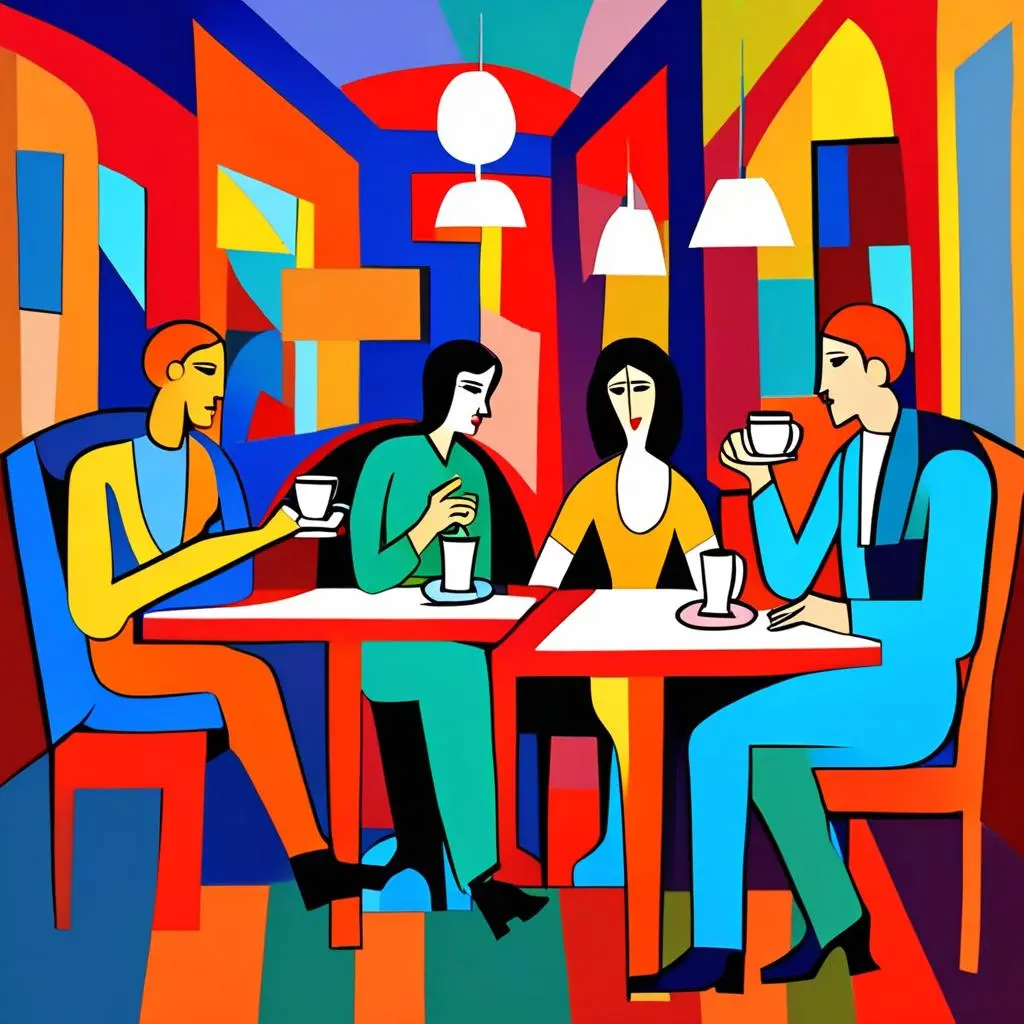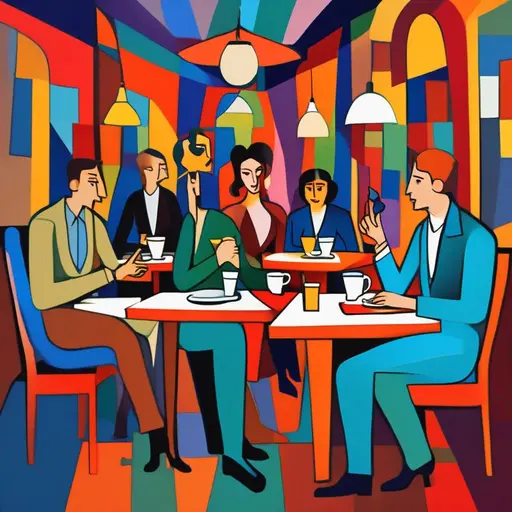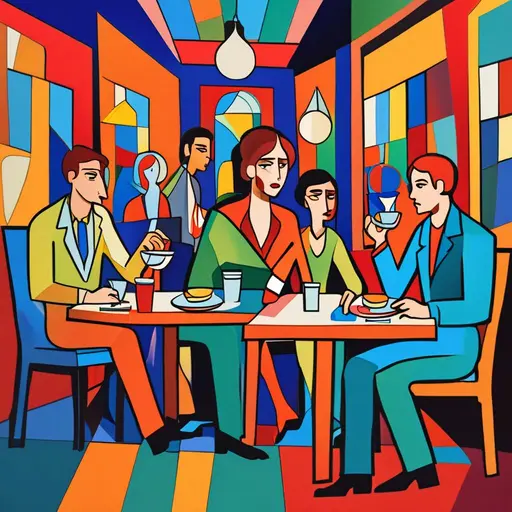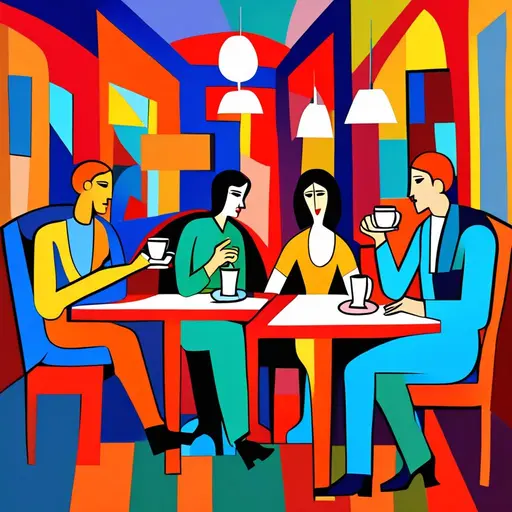FLUX.2 is live! High-fidelity image generation made simple.

Seed Anchoring and Parameter Tweaking with SDXL Turbo: Create Stunning Cubist Art
In this blog post, we're going to explore how to create stunning cubist art using SDXL Turbo. We'll dive into the art of crafting effective prompts, fine-tuning parameters, and pushing the boundaries of AI-generated art.
Table of Contents
Introduction
As DeepInfra, we're excited to announce our latest text-to-image model release, SDXL Turbo. Built on top of the original SDXL model, the model utilizes Adversarial Diffusion Distillation (ADD). If you’re into the technical nitty-gritty, feel free to explore the details in the official paper here.
Long story short, SDXL Turbo delivers high-quality images in fewer steps compared to its predecessor. Curios to try? You can experiment with original SDXL or dive into the faster SDXL Turbo.
Let’s begin this journey with a quote from Pablo Picasso, one of the pioneers of Cubism:
"There is no abstract art. You must always start with something. Afterward you can remove all traces of reality." - Pablo Picasso
You must have heard about Pablo Picasso, right? If not, you can check his work here.
Now, let’s explore how SDXL Turbo can be used to create stunning cubist artwork.
How to Use
After testing various setups, I’ve found the following parameters work best for SDXL Turbo in most cases:
Num Inference Steps: 5Guidance Scale: 1.0Width: 1024Height: 1024
These settings strike a balance between speed and quality, but you’re welcome to adjust them depending on your specific needs. In this blog post, we'll experiment with these parameters.
That said, we’re not here for just any use case—we’re here to create cubist art. So let’s tweak these parameters a bit to suit our creative goals.
Now that we have a solid understanding of the tools at our disposal, let’s dive into creating cubist art with SDXL Turbo.
Getting Started
As you probably know, creating great art isn’t just about pushing a button. You need a vision, a plan, maybe even a story—actually, scratch that. What you really need is a strong prompt!
Prompting with Style
In my previous blog post, I discussed how to achieve consistency by anchoring a seed value and pivoting prompt around it. If you somehow missed it, you can check it out here.
This time, we’ll use a similar technique to generate cubist art. We’ll anchor the seed value to a cubist painting and pivot parameters around it.
To guide SDXL Turbo toward a cubist aesthetic, we need a consistent description in the prompt. The scene details can vary, but the style should remain fixed. Here’s a good starting point:
A cubist style painting with expressionist color palette with abstract shapes and forms.
I added “expressionist color palette” to introduce vibrant, dynamic colors. Feel free to modify the prompt as you experiment, but this is a solid base.
For these tests, I've anchored seed value at 42.
Now, let’s add a scene description to further guide the model:
A cubist style painting with expressionist color palette with abstract shapes and forms. The scene is a cafe with people sitting around tables.
Generating the Image
Here’s the initial result using the default settings:

Looks cubist enough, right? Definitely. But to dial it up a notch, we can adjust the parameters rather than tweaking the prompt. Here’s how.
Let's increase the Guidance Scale to 2.0 and check the result.

Now we’re getting somewhere. The shapes are more abstract, and the details are reduced. But it still feels a bit unfinished, like the denoising process needs more refinement. Let’s bump the Num Inference Steps to 10.

Much better! The image looks more polished now. If we want to further reduce detail and focus more on abstract forms, let’s try increasing the Guidance Scale to 3.5.

That’s what I’m talking about! The abstract shapes and geometric forms are more pronounced, and the overall composition feels much more aligned with cubist principles.
Fine-tuning Your Results
Now that we’ve hit a sweet spot for cubist art, let’s explore ways to refine our images even further.
Experimenting with Prompts
While the current prompt works well for cubism, playing with variations can produce different stylistic elements. Here are some alternative prompts to try:
-
Emphasize geometric shapes:
A cubist style painting with an emphasis on geometric shapes and fractured forms. The scene depicts a lively cafe with patrons and tables.
-
Focus on multiple perspectives:
A cubist artwork showing multiple simultaneous viewpoints of a bustling cafe scene, with overlapping planes and angular forms.
-
Incorporate specific cubist techniques:
A cubist composition using techniques like faceting and passage to represent a cafe interior with figures and furniture.
Adjusting Parameters
Beyond the prompts, you can also fine-tune the parameters to perfect your results. Here’s how different settings can impact your images:
-
Guidance Scale: A higher scale makes the image stick more closely to the prompt, but can sometimes introduce artifacts. For cubism, a scale between 2.0 and 4.0 works best.
-
Num Inference Steps: Increasing steps typically leads to more detailed images, but there’s a trade-off with generation time. For SDXL Turbo, 5 to 10 steps strike a good balance.
-
Width and Height: While we've been using 1024x1024, you might experiment with different aspect ratios to achieve different compositional effects. For example, a 768x1024 canvas might be interesting for a portrait-oriented cubist piece.
Pushing the Boundaries
Once you’re comfortable with generating cubist art, it’s time to push the limits by blending cubism with other styles. Here are some creative combinations to try:
-
Cubist Surrealism:
A cubist-surrealist fusion painting of a melting clock in a fragmented cafe scene, inspired by Salvador Dali and Pablo Picasso.
-
Futurist Cubism:
A dynamic cubist interpretation of a high-speed train station, blending fragmented forms with a sense of motion and modernity.
-
Abstract Expressionist Cubism:
A large-scale cubist composition with bold, gestural brushstrokes and vibrant color fields, merging cubist forms with abstract expressionist techniques.
Conclusion
SDXL Turbo is an incredibly powerful tool for generating cubist-style artwork. By understanding how to craft effective prompts and fine-tune parameters, we can create a wide range of cubist-inspired images that push the boundaries of AI-generated images that reflect the essence of cubism.
Remember, experimentation is key. Don’t hesitate to try out unconventional prompts or settings.
Happy creating, and may your AI-generated cubist masterpieces inspire a new generation of digital artists!
Until next time!
 Llama 3.1 70B Instruct API from DeepInfra: Snappy Starts, Fair Pricing, Production Fit - Deep Infra<p>Llama 3.1 70B Instruct is Meta’s widely-used, instruction-tuned model for high-quality dialogue and tool use. With a ~131K-token context window, it can read long prompts and multi-file inputs—great for agents, RAG, and IDE assistants. But how “good” it feels in practice depends just as much on the inference provider as on the model: infra, batching, […]</p>
Llama 3.1 70B Instruct API from DeepInfra: Snappy Starts, Fair Pricing, Production Fit - Deep Infra<p>Llama 3.1 70B Instruct is Meta’s widely-used, instruction-tuned model for high-quality dialogue and tool use. With a ~131K-token context window, it can read long prompts and multi-file inputs—great for agents, RAG, and IDE assistants. But how “good” it feels in practice depends just as much on the inference provider as on the model: infra, batching, […]</p>
 Long Context models incomingMany users requested longer context models to help them summarize bigger chunks
of text or write novels with ease.
We're proud to announce our long context model selection that will grow bigger in the comming weeks.
Models
Mistral-based models have a context size of 32k, and amazon recently r...
Long Context models incomingMany users requested longer context models to help them summarize bigger chunks
of text or write novels with ease.
We're proud to announce our long context model selection that will grow bigger in the comming weeks.
Models
Mistral-based models have a context size of 32k, and amazon recently r...
© 2025 Deep Infra. All rights reserved.


